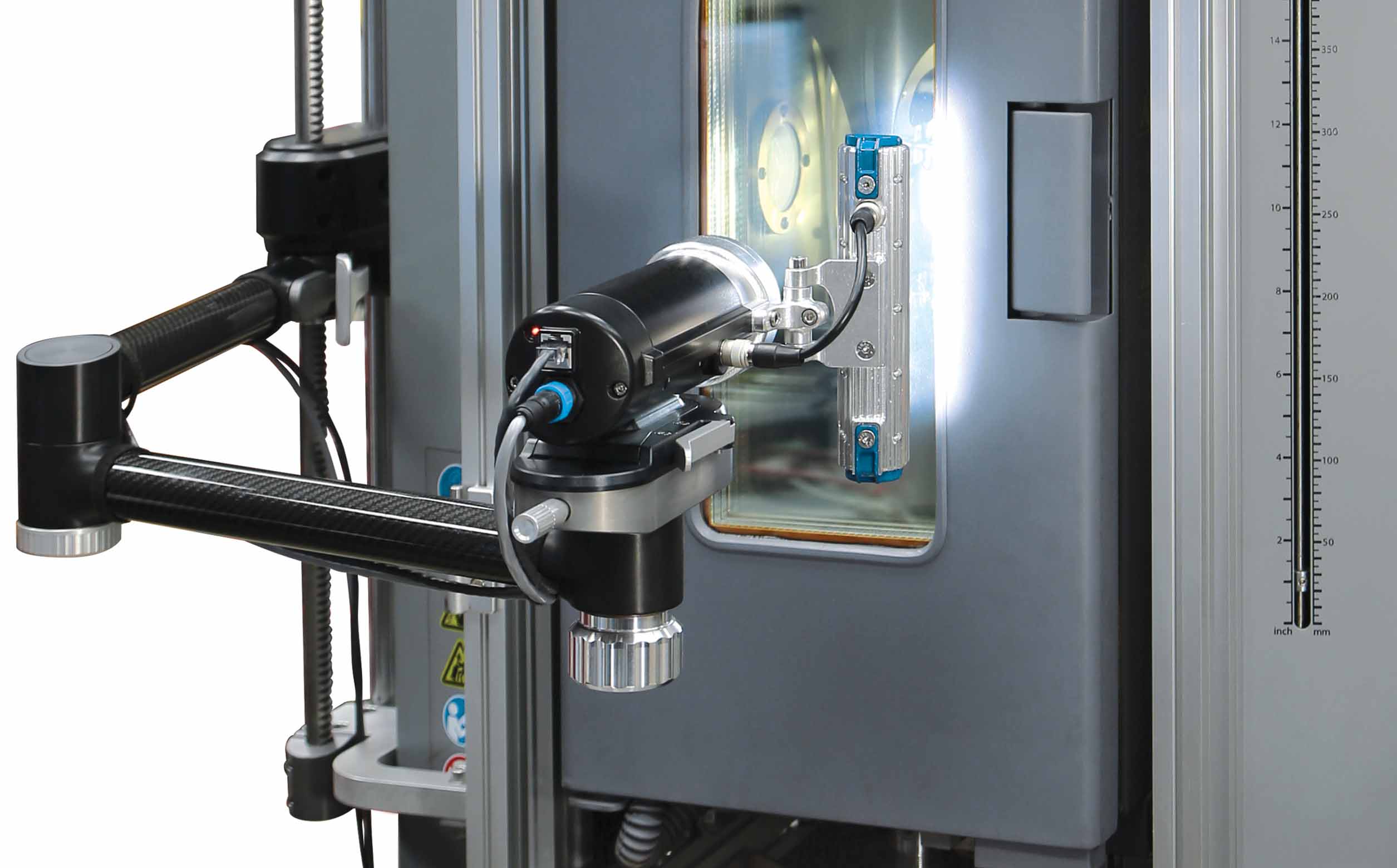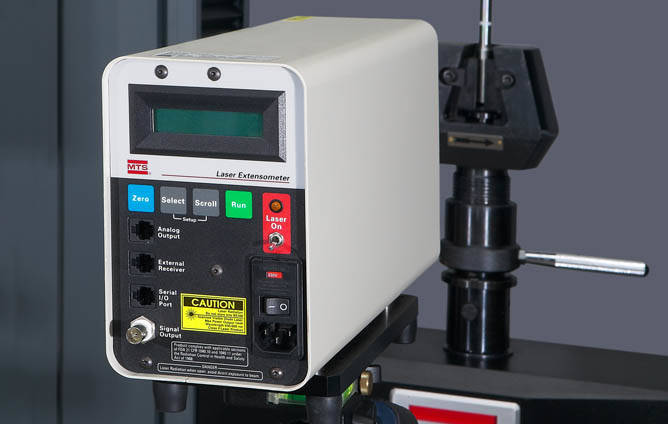
Conducting non-contacting strain measurement at non-ambient temperatures requires special attention to test setup. Here are a few tips to help you achieve reliable results when using an environmental chamber with a non-contacting extensometer.
Chamber Window
The chamber window needs to be made of optical quality glass, and the window size must support the required field of view in both the axial and transverse directions. Making sure the window is large enough is especially critical if you are planning to use a stereo-camera system. In addition, the window size must be large enough to accommodate the light that will illuminate the specimen surface.
Working Distance
The working distance of the non-contacting extensometer must be large enough so that the extensometer can be placed outside the chamber at the proper distance when the chamber door is closed.
Sub-zero Temperatures
When testing at sub-zero temperatures, the chamber window may need to be defrosted. Chamber windows that can be defrosted have embedded heating elements like the wires used in car window defrost systems. They function by running a current through the wires to heat them which warms the window to remove the frost. The downside to using these defrosting windows is that the wires might reduce the transverse field of view or limit the amount of light that reaches the specimen surface. For this reason, laser extensometers, which have a narrow field of view, can be a good choice for sub-zero temperature testing. When using a laser extensometer, the heating elements in the chamber window do not interfere with the strain measurement. By contrast, if using a video extensometer to conduct 2D or 3D DIC, then the distance between the heating elements must be wide enough for the required field of view.
Another challenge at low temperatures is that ice crystals may form on the specimen and hide the marks on the specimen surface. If the required temperature causes icing on the specimen surface, then a non-contacting extensometer probably will not work. Some chambers provide humidity control, which is one way to address the issue, but standard chambers don’t often include humidity control.
High Temperatures
At higher temperatures special ink or markers are required, depending on the test temperature. MTS can recommend marker types for specific temperature ranges.
The signal is noisier when the temperature is increased due to radiation or air circulation. One way to mitigate this issue is to use the fan when coming up to temperature, and then turn it off to reduce the thermal current when testing. If the test frequency or test speed allows it, then a filter can be applied to minimize the signal noise.
Extensometer Mounting
A tripod mounting solution is most flexible and can be easily moved between different systems. The disadvantage of the tripod is that it must be placed on the floor in front of the system, which makes it more difficult to change out specimens, and the operator must be careful not to accidentally bump into or trip over the tripod legs.
Some extensometers come with a frame mounted solution that allows the operator to easily remove the unit, so that the chamber door can be opened to change the specimen and then the extensometer can be put back in front of the chamber.
Please contact MTS for more information about how to use a non-contacting strain measurement device with an environmental chamber.

